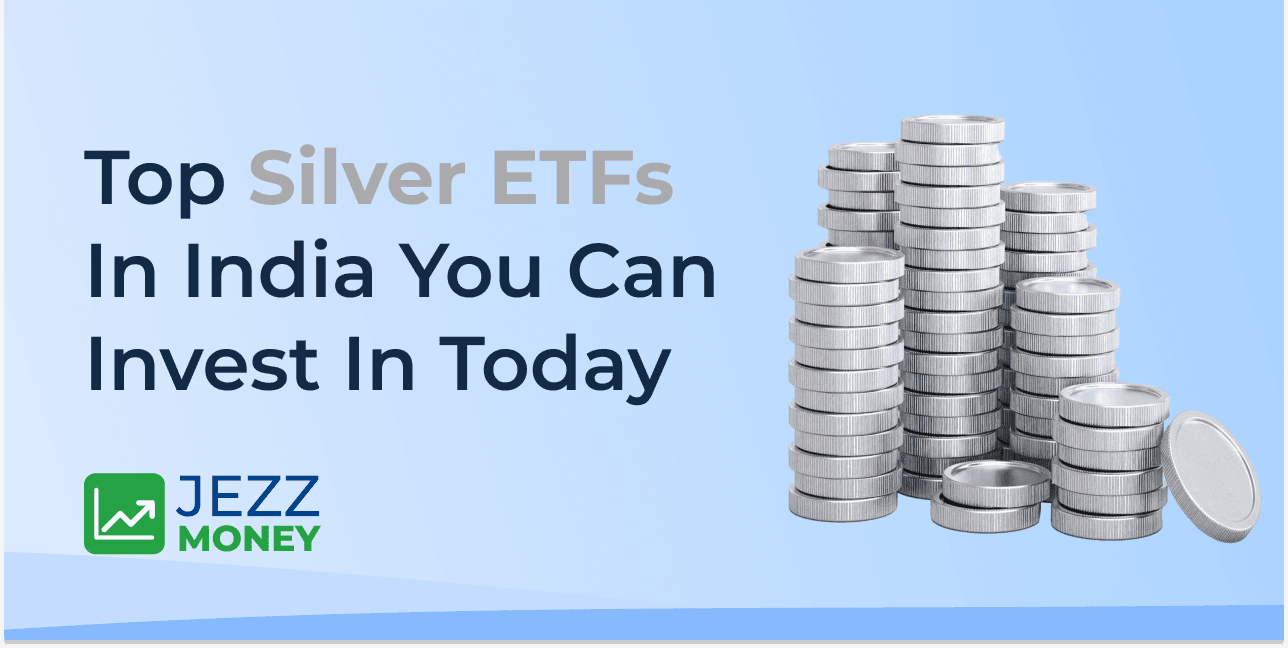If you want to invest in silver but do not want to hold the metal physically, Silver ETFs provide a more convenient and less expensive way to do it. Here are some of the best Silver ETFs in India:
1. Nippon India Silver ETF
The Nippon India Silver ETF is a passively managed fund launched on February 4, 2022, by Nippon India Mutual Fund. It provides metal-less exposure to silver by tracking domestic silver prices. Available on multiple Indian stock exchanges, it aims to deliver returns close to the Domestic Price of Silver Index, gross of fees and subject to tracking errors.
- Launch Date: February 2, 2022
- Expense Ratio: 0.56%
- AUM: ₹10,851.84 crore (as of August 31, 2025)
- Performance Since Launch: 21.22%
- Benchmark: Domestic Price of Silver Index
- Risk Profile: Very High
- Minimum Investment: ₹1,000
2. ICICI Prudential Silver ETF
Launched on January 24, 2022, this ETF follows domestic silver prices and aims to correspond closely to the Domestic Price of Silver Index. Listed on NSE and BSE, it provides easy access for investors.
- Launch Date: January 24, 2022
- Expense Ratio: 0.40%
- AUM: ₹7,257 crore (as of August 31, 2025)
- Performance Since Launch: 20.12%
- Benchmark: Domestic Price of Silver
- Risk Profile: Very High
- Minimum Investment: ₹5,000
3. HDFC Silver ETF
Launched on September 2, 2022, by HDFC Mutual Fund, this ETF tracks domestic silver prices. Managed by Bhagyesh Kagalkar, it provides liquidity and easy access via Indian stock exchanges.
- Launch Date: September 2, 2022
- Expense Ratio: 0.45%
- AUM: ₹1,369 crore (as of August 31, 2025)
- Performance Since Launch: 32.85%
- Benchmark: Domestic Price of Silver Index
- Risk Profile: Very High
- Minimum Investment: ₹5,000
4. Aditya Birla Sun Life Silver ETF
Available since January 31, 2022, this fund invests at least 95% of its net assets in physical silver (99.9% purity). Managed by Sachin Wankhede, it tracks the Domestic Price of Silver Index and offers accessible trading on major stock exchanges.
- Launch Date: January 31, 2022
- Expense Ratio: 0.35%
- AUM: ₹1,085.39 crore (as of August 30, 2025)
- Performance Since Launch: 21.55%
- Benchmark: Domestic Price of Silver Index
- Risk Profile: Very High
- Minimum Investment: ₹500
5. Kotak Silver ETF Fund of Fund (FoF)
Launched on March 31, 2023, this open-ended mutual fund invests in units of the Kotak Silver ETF, providing indirect exposure to silver. Managed by Jeetu Valechha Sonar and Abhishek Bisen, it has outperformed its benchmark since inception.
- Launch Date: March 31, 2023
- Expense Ratio: 1.05%
- AUM: ₹224.86 crore (as of August 31, 2025)
- Performance Since Launch: Data not specified
- Benchmark: Domestic Prices of Physical Silver
- Risk Profile: Very High
- Minimum Investment: ₹5,000
6. SBI Silver ETF
Launched on June 24, 2024, by SBI Mutual Fund, this ETF aims to provide returns closely corresponding to domestic silver prices. Managed by Vandna Soni, it is suitable for investors comfortable with the inherent volatility of commodities.
- Launch Date: July 3, 2024
- Expense Ratio: 0.40%
- AUM: ₹782.46 crore (as of August 31, 2025)
- Performance Since Launch: 30.57%
- Benchmark: Domestic Price of Silver
- Risk Profile: Very High
- Minimum Investment: ₹5,000
